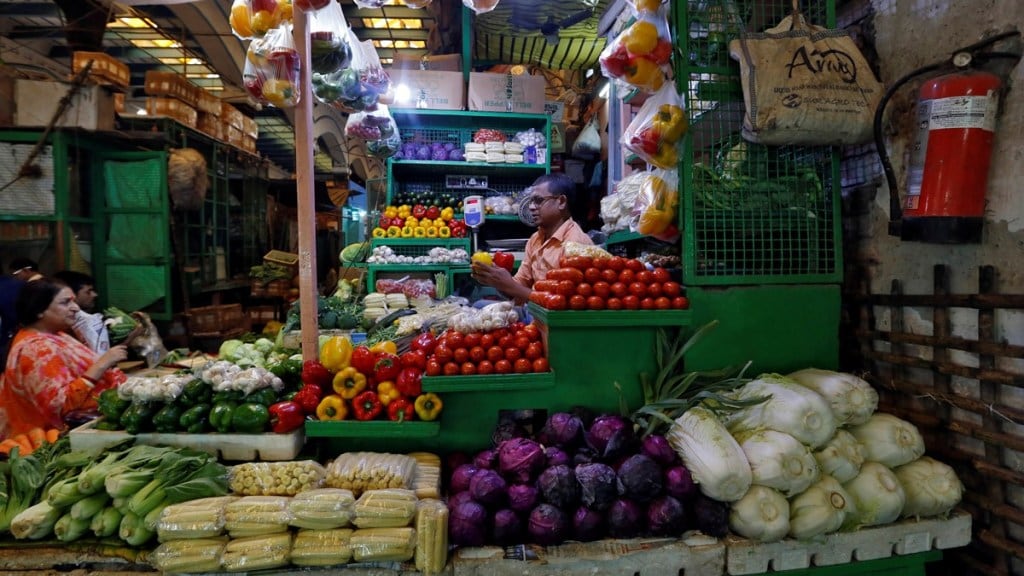– By Dipti Deshpande and Pankhuri Tandon
The April monetary policy review, the first one of fiscal 2025, marked 14 months since the repo rate was changed to 6.5%. The Monetary Policy Committee (MPC) of the Reserve Bank of India (RBI) has grappled with see-sawing inflation during this period, from a low of 4.3% in May to a peak of 7.4% in July and to 5.1% in the most recent reading in February 2024.
Core inflation, which reflects the demand-side impact on prices, has slid to a record low.
But food inflation, after brief easing, is rising again and remains sticky across sub-components. Separately, global oil prices are ascending as well, clouding the inflation outlook. Not surprisingly, the MPC underscored caution on inflation, but took comfort from strong growth momentum. These two trends give it more time to turn the interest rate cycle. Clarity on the Consumer Price Index (CPI) gauge moving durably towards the 4% goal is the key.
CRISIL’s base case is that the macroeconomic environment would become favourable for a rate cut after June unless crude oil prices and monsoon play spoilsport.
Globally, too, central banks are likely to err on the side of caution, given that varied supply shocks in the recent past — the pandemic, ongoing geopolitical tensions and weather shocks — have made the disinflationary path challenging.
Yet, markets globally are preparing for rate cuts. For India, the stickiness in the last mile of the disinflation path and already strong growth momentum warrant circumspection. This fiscal has begun with a better inflation picture. CPI readings have been within the MPC’s tolerance band of 2-6% in the past 6 months, with the gauge touching 5.1% in February. The RBI expects CPI inflation to ease to an average 4.5% this fiscal. Given that monetary policy is forward-looking, such a forecast creates grounds for a rate cut.
While non-food inflation has fallen below 4% in the past 6 months, food inflation has remained above 8%. Food prices remain vulnerable to erratic weather shocks. The past year also saw El Niño that weakened monsoon and damaged crops. With a sizeable 39% of weight in the CPI basket, and a significant influencer of household inflation expectations, food inflation lends an upside and uncertainty to inflation that RBI cannot ignore. However, there are signs that supply shocks may dissipate in this fiscal year.
The US weather forecasting agency National Oceanic and Atmospheric Administration (NOAA) expects La Niña — the phenomenon opposite to El Niño — to develop by June-August.
Now La Niña augurs well for southwest monsoon. The consequent easing of food, combined with lower non-food inflation could bring down overall inflation.
The cuts announced so far in liquefied petroleum gas (LPG) prices will further lower non-food inflation. While the recent rise in crude oil prices could put some pressure, it remains below the $100 mark breached during the Russia Ukraine war. Overall, core inflation is expected to remain benign this fiscal.
The recent strong growth has not created significant upside pressures on inflation. Core inflation fell to 4.4% average in the first eleven months of fiscal 2024 from 6.1% in fiscal 2023, despite GDP growth rising to 7.6% from 7%. This is because investments have driven the recent rise in growth, while household consumption spending slowed. Typically, investments increase supply and production capacity in the economy, while consumption adds to demand pressures.
Despite tighter monetary conditions, the Indian economy is growing strong and responding more to structural than cyclical factors such as high interest rates.
To be sure, the impact of the RBI’s measures to bring down risky credit are still playing out. This could take some steam off credit growth. Secondly, the economy is expected to see somewhat lower support from the government as it moves to reduce the fiscal deficit this fiscal. Thirdly, external conditions are aligning for an imminent easing of financial conditions.
S&P Global expects the US Federal Reserve and the European Central Bank to begin cutting rates from June. Foreign capital flows to India are set to rise significantly and sustainably — as Indian sovereign bonds get included in major global indices this year.
India’s current account deficit has also eased closer to 1%, well within the comfort zone. The improved external profile will support the rupee.
Overall, the expected easing in inflation, non-inflationary nature of growth and easing external conditions should create conditions for a turn in the monetary policy cycle post June. For the past one year, without moving the policy rate, the RBI has been able to ensure transmission of rate hikes by absorbing excess liquidity. Similarly in the upcoming rate cut cycle, the RBI may lean more on liquidity management rather than repo rate to manage pockets of risks in financial markets and ensure financial stability. But food inflation remains the joker in the pack. Early signs are of a better outlook for it this year.
Over to the rain god.
(Dipti Deshpande is Principal Economist and Pankhuri Tandon is the Senior Economist at CRISIL Limited.)
(Disclaimer: Views expressed are personal and do not reflect the official position or policy of Financial Express Online. Reproducing this content without permission is prohibited.)


